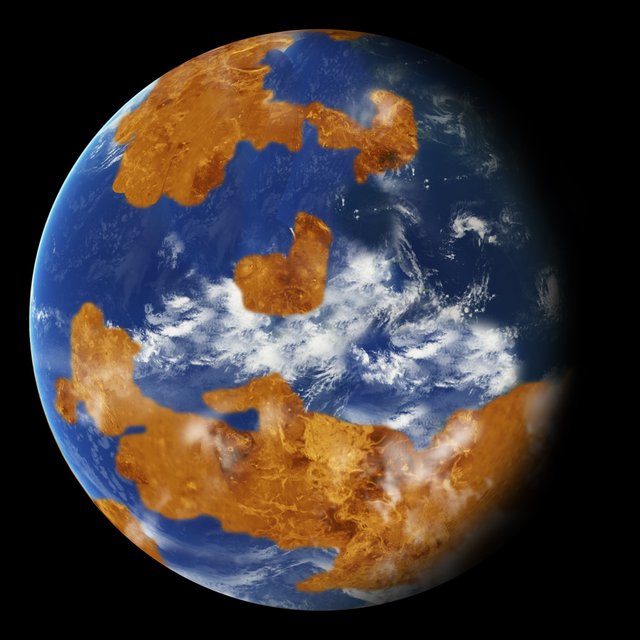Climatic simulations by NASA shows that Venus may have been inhabited

The observations show: Venus, perhaps in the distant past, there was water. Introduced template was used as a climate model on the planet, to show how the storm clouds may hide old Venus from strong sunlight, which made it suitable for life.
According to computer simulations of early Earth's climate, scientists from the Institute of NASA Goddard found that Venus may have been a shallow ocean water and pure habitable surface temperature over the past two billion years of its early history. Venus today is a real hell. Shattering atmosphere consisting of carbon dioxide, 90 times thicker than Earth's. Water vapor is almost there. The temperature on the surface of Venus reaches 864 degrees Fahrenheit (462 degrees Celsius). "Many of the tools that we use to simulate climate change on Earth, can be used to study the climatic conditions on other planets. Like last time, and this, - said Michael Wei, the GISS researcher and lead author of the Astrophysical gazety.- These results show that the ancient Venus may have been radically different from that of the planet, which we see today. " Scientists have long believed that Venus formed from the same materials as the Earth, but took a different evolutionary path. In the 1980s, NASA sent to explore the Venus Pioneer spacecraft. For the first time made measurements showed: Venus long ago may have been an ocean. However, Venus is closer to the Sun than the Earth, and receives more sunlight. As a result, old world ocean evaporated, and water vapor molecules have been cleaved under the action of ultraviolet radiation, and thus hydrogen was in space. In the absence of water on the surface, the carbon dioxide accumulated in the atmosphere, leading to the so-called greenhouse effect that created the current conditions. The day on Venus is 117 Earth days. Until recently it was thought that such a thick atmosphere, like a modern Venus, was needed to maintain a low speed. However, new studies have shown that thin atmosphere as in the present Earth, produces the same result. This means that the old Venus, similar to the Earth's atmosphere could have the same rotational speed, which it has today. Another factor that affects the climate of the planet is the topography. GISS team clarified that the ancient Venus was much more dry land than the Earth. This significantly reduces the amount of water evaporated from the oceans and Venus, respectively, water vapor, which has created the greenhouse effect. Accordingly, this type of surface is ideal for creating a habitable planet.
Source: lenta.ru
Venus with Nikon 900
'Wake up Jake' - Revolver 2015
Edit Correct Source: http://rusnasa.ru/main/1924-klimaticheskoe-modelirovanie-nasa-pokazyvaet-venera-vozmozhno-byla-obitaemoj.html